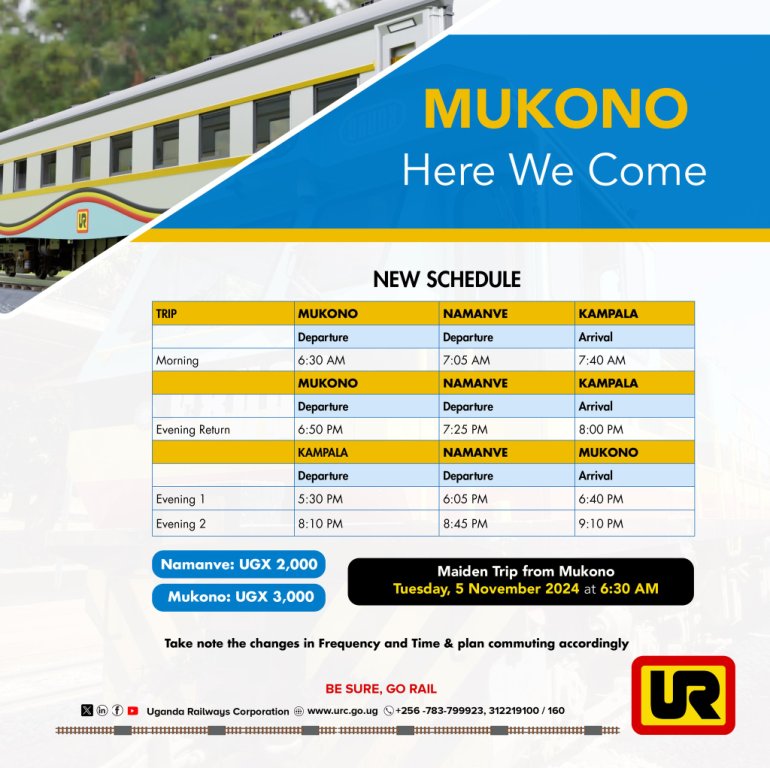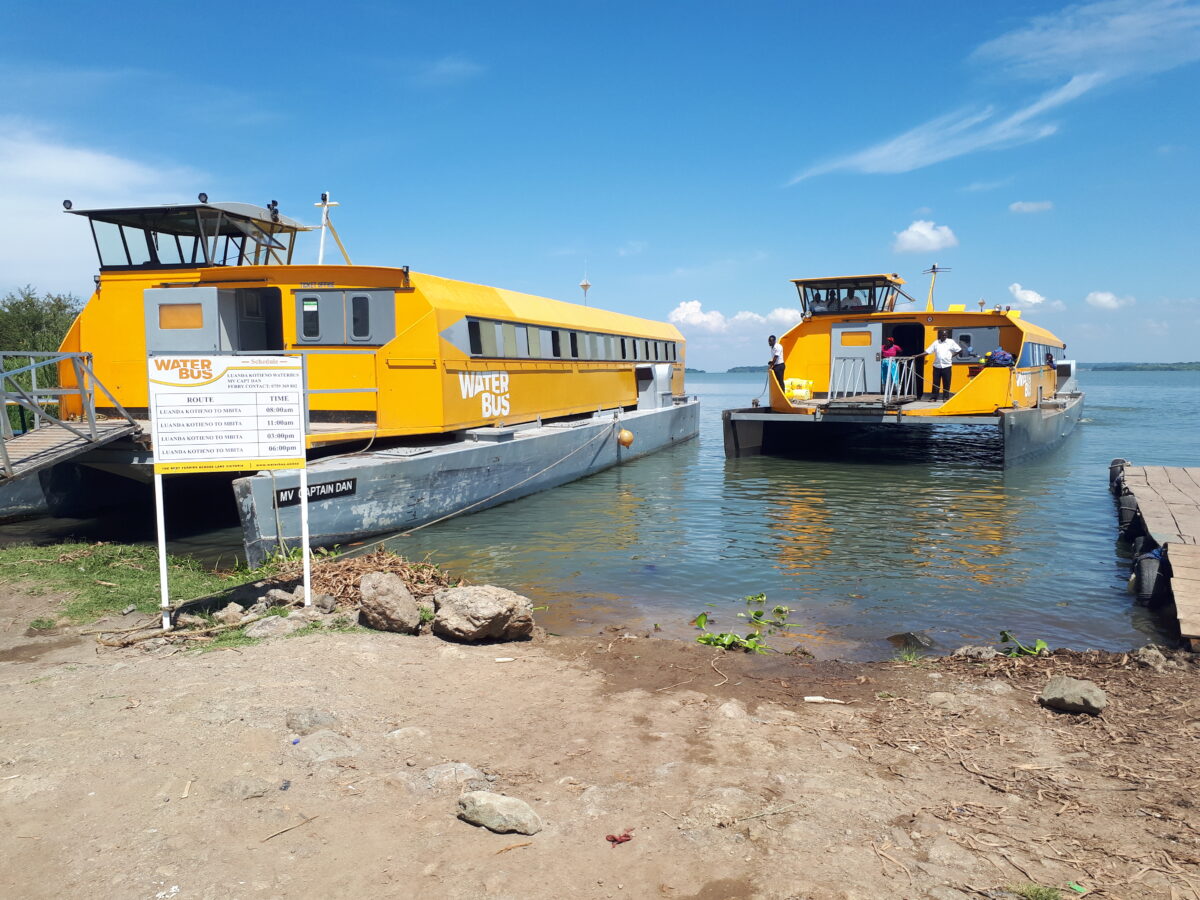(Mukono) – The new Mukono-Kampala commuter train service launches on Tuesday, November 5, 2024, providing a much anticipated alternative for Kampala metropolitan area commuters grappling with daily traffic congestion.
The Uganda Railway Corporation (URC), a government entity, announced the introduction of two train services: one covering the full Mukono-Kampala route and the other running between Namanve and Kampala. According to the URC statement released on Sunday, November 3, 2024, these routes aim to improve connectivity and ease congestion along this high-demand corridor.
For morning commuters from Mukono, the train departs at 6:30 a.m., making a stop at Namanve and reaching Kampala by 7:40 a.m. Evening travelers from Mukono can expect a departure at 6:50 p.m., with an arrival in Kampala by 8:00 p.m. On the return journey, the train leaves Kampala at 5:30 p.m. and reaches Mukono at 6:40 p.m., with an additional evening service departing Kampala at 8:10 p.m. and arriving in Mukono at 9:10 p.m.
Meanwhile, for those using the Namanve-Kampala route, morning departures from Namanve are scheduled for 7:05 a.m., arriving in Kampala at 7:40 a.m. Evening trains depart from Namanve at 7:25 p.m. and arrive in Kampala by 8:00 p.m., allowing Namanve commuters flexibility in their evening travel plans. Passengers returning from Kampala to Namanve in the evening are advised to arrive by either 6:00 p.m. or 8:40 p.m., depending on the departure time.
| Route | Morning Departure | Morning Arrival | Evening Departure | Evening Arrival |
|---|---|---|---|---|
| Mukono-Kampala | 6:30 a.m. | 7:40 a.m. | 6:50 p.m. | 8:00 p.m. |
| Kampala-Mukono | 5:30 p.m. | 6:40 p.m. | 8:10 p.m. | 9:10 p.m. |
| Namanve-Kampala | 7:05 a.m. | 7:40 a.m. | 7:25 p.m. | 8:00 p.m. |
| Kampala-Namanve | 6:00 p.m. | 6:40 p.m. | 8:40 p.m. | – |
This service follows the recent completion of renovation works on the Mukono-Kampala rail line. The project, which started in April last year, involved replacing aging steel sleepers with more durable concrete ones to improve service reliability and safety for the anticipated increase in passenger load.
Fares for the train service are set at 3,000 UGX for the Mukono route and 2,000 UGX for the Namanve route. The URC reports that each train can accommodate between 600 and 750 passengers, meaning that with both trains running, the capacity is between 1,200 and 1,500 passengers per trip.
Andrew Muguluma, a URC board member and the chair of the technical committee, stated that the service will be gradually upgraded as more coaches and locomotives are acquired. URC has also implemented additional security measures to ensure passenger safety, deploying both uniformed and undercover security officers to monitor for any suspicious activity. Muguluma added that URC is planning to extend services to cover the Kyengera-Kampala route within a year. Initial steps, including line scooping, have been completed, with the project currently moving into the tendering stage.
The introduction of the commuter train service comes as a potential solution to one of Africa’s most congested urban areas. The Kampala metropolitan area is heavily impacted by traffic, with a World Bank report from 2019 estimating that commuters lose about 24,000 man-hours each day to congestion. This equates to around 52 days each year spent in traffic, illustrating the toll on productivity and quality of life for city residents.
Despite the positive reception, some commuters have voiced concerns about the new service. Social media users have noted that the Mukono train’s staging at Kyetume—approximately 4 kilometers from Mukono town—limits accessibility. A user named Clevermulowoza suggested on social media platform X, formerly Twitter, that more substations, such as in Kyungu, Njerere, and Kisenyi, should be introduced along the route to enhance convenience and prevent empty trains. Another user, JC, raised concerns over the duration of the journey, noting that the 21-kilometer Mukono-Kampala trip taking over an hour might be too slow for some passengers.
The URC has expressed openness to public feedback and plans to continue evaluating the service for potential improvements to better meet commuter needs.




















